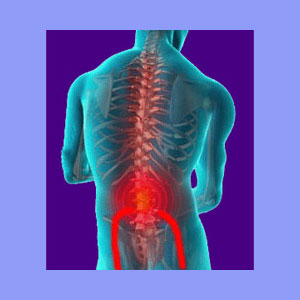
Painful sciatica can make life a real misery, since the symptoms of the condition are both agonizing and functionally debilitating in most cases. Sciatica is a set of symptoms which are indicative of a source condition, but it is not a condition unto itself. Remember, if your doctor diagnoses you with sciatica, then your response should be: “Really doctor, thanks for nothing”. They might as well just say: “You have leg pain”.
Sciatica is a symptom, not a diagnosis!
It is vital to remember that not all sciatica conditions are painful. Sciatica is a term which can also describe neurological effects in the legs, absent pain, including tingling or paresthesia. However, the overwhelming majority of sciatica cases do involve discomfort to one degree or another and pain factors in to the symptom mix in over 95% of diagnosed patients.
Sciatica: Why is it Painful?
In cases of painful sciatica, it hurts because of abnormal nerve involvement which can send pain signals to the brain. These signals appear to come from the buttocks, legs or feet, but the pain rarely actually is sourced in these regions. Instead, the nerves are being affected farther up inside the body, often in or near the spinal column.
Spinal nerve roots can be affected by structural issues, such as herniated discs or spinal osteoarthritic conditions leading to compressive neuropathies. However, they can also fall victim to less often diagnosed, but just as prevalent nonstructural concerns, such as regional ischemic sciatica.
Some patients do not have actual pain, but instead are victimized by a variety of neurological effects instead. Although these may not be classified as pain, they are always disturbing, mentally and physically.
Ending Painful Sciatica
In order to beat sciatica, it is crucial to achieve a correct diagnosis as to the real source of pain. While this aspect of care is taken for granted in most cases, it is actually where the entire treatment process sometimes goes off course.
Mistakenly diagnosed sciatica conditions affect many patients with chronic symptoms which do not respond to seemingly indicated treatments. It is not the variety of sciatica treatments which fail, but instead, it is simply that these therapies are not directed at the actual source of pain. Therefore, how can they ever succeed?
When I get your letters describing intractable pain which has lasted months, years or decades, despite active treatment, I almost always think misdiagnosis. Remember, besides nerve root compression in the lumbar spine, there are many other possible explanations for back and leg pain. These other sources include cervical spinal stenosis, thoracic spinal stenosis, lumbar spinal stenosis, piriformis syndrome and even sacroiliac joint symptoms, in rare instances.
Help for Painful Sciatica
So many patients suffer pain which is worse in their legs compared to anywhere else in their body. It is true that most sciatica sufferers also have low back pain and some might have neck or middle back pain, as well or instead.
Patients who have severe central spinal stenosis have the best chance of suffering purely nerve-related effects without pain, including foot drop, incontinence or the inability to stand. Even with these horrible expressions, some patients still report no significant discomfort.
Pain is never a normal state for the body to experience without good reason. Being that so many patients have long lasting and severe pain, often without structural correlation, makes sciatica seems like a great enigma. However, with the complexity of the spinal column and the possibility of many nonstructural causes and contributors towards sciatica pain, there is usually a valid explanation to be found if the diagnostic process is thorough.
Unfortunately, so many doctors avoid becoming overly involved in the diagnosis of sciatica, since this is a time consuming process of elimination. It is far more profitable and commonplace to find the simplest possible source in the lumbar spine and blame it for enacting the discomfort, regardless of the accuracy of symptomatic correlation, if this vital step is even performed at all.





